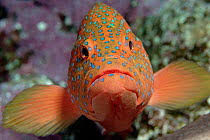The Dragon and Its Connection to Eternity in Chinese Artworks

The dragon is one of the most significant and iconic symbols in Chinese culture. It holds a place of reverence and respect across various cultural domains, including mythology, philosophy, and art. In Chinese artworks, the dragon is not just a mythical creature, but an enduring symbol of power, strength, and immortality. Its connection to eternity is deeply embedded in artistic expressions throughout the centuries, from traditional paintings and sculptures to ceramics and textiles. This article delves into the dragon’s association with eternity in Chinese art, exploring how it represents immortality, continuity, and the cosmic balance that has captivated generations of artists, philosophers, and the people of China.
The Symbolism of the Dragon in Chinese Culture
In Chinese culture, the dragon is often viewed as a creature of both the heavens and the earth. Unlike the terrifying, fire-breathing dragons of Western mythology, the Chinese dragon is a benevolent and auspicious being, symbolizing good fortune, power, and authority. It is also associated with the emperor, who was believed to be the “Son of Heaven,” and thus, the dragon was a symbol of imperial power, divine protection, and immortality.
The dragon’s physical features, such as its long serpentine body, antler-like horns, sharp claws, and wise eyes, were believed to embody qualities like grace, strength, and agility, making it an ideal representation of eternity in the Chinese worldview. Its ability to soar through the skies, dive into the seas, and move across the land reflects its dominion over all elements, further emphasizing its eternal nature. The concept of eternity is central to Chinese philosophy, especially in Taoism, where the idea of immortality, the flow of life, and the preservation of harmony with nature are key themes. The dragon, in this sense, serves as a physical manifestation of the eternal cycles of nature and existence.
The Dragon in Traditional Chinese Art
The dragon’s association with eternity is profoundly illustrated in traditional Chinese art. The most prominent and revered depiction of the dragon in Chinese art is its representation on imperial regalia, architecture, and ceremonial objects. In these contexts, the dragon symbolized not only imperial power but also the eternal connection between heaven and earth.
One of the most well-known representations of the dragon in traditional Chinese art is the dragon robe, worn by emperors during significant ceremonies. The robe was embroidered with a dragon that symbolized the emperor’s role as a ruler of the cosmos, with the dragon embodying the concept of eternal rule. The robe’s intricate design depicted dragons surrounded by clouds and waves, reinforcing the idea of the celestial dragon’s dominion over the natural world and the eternal flow of time. The dragon’s presence on such garments signified the emperor’s divine right to rule, his unbroken lineage, and the eternal legacy of the imperial family.
The dragon’s symbolism of eternity is also visible in the famous Chinese art form of ceramics. Chinese porcelain, particularly during the Ming and Qing dynasties, often featured depictions of dragons. These dragons were meticulously painted or sculpted onto vases, bowls, and other ceramics, serving as a decorative symbol of longevity and the continuous cycle of life. The recurring motif of the dragon on ceramics was a visual representation of the unending flow of energy, life, and prosperity that was believed to be inherent in the dragon’s spirit.
Another prominent example of the dragon in traditional Chinese art is in the form of wall paintings and scrolls. These artworks often depicted dragons in dynamic and powerful poses, surrounded by elements like clouds, mountains, and waves, which symbolize the forces of nature. The dragon’s eternal nature was emphasized by its movement across time and space—soaring through the heavens, swimming through the oceans, or coiling around trees or mountains—symbolizing the endless cycles of life, death, and rebirth.
Taoism and the Dragon: A Connection to Immortality
Taoism, one of the major philosophical and religious traditions in China, plays a crucial role in the dragon’s connection to eternity in Chinese art. In Taoist philosophy, the pursuit of immortality is central to the beliefs surrounding the spiritual world. Taoism teaches that the human body and spirit are part of the cosmic order, and achieving immortality is a way of maintaining harmony with the Tao, the fundamental principle that underlies and flows through all things.
The dragon, as a symbol of the Tao, represents the eternal flow of energy (Qi) that exists in all living things. It is said to possess the ability to transcend the limits of time and space, moving freely between heaven, earth, and the underworld. This quality aligns perfectly with the Taoist pursuit of immortality and spiritual enlightenment. In Taoist art, the dragon often appears as a celestial being that moves effortlessly between the realms of the living and the dead, embodying the concept of eternal life.
The dragon’s role in Taoism extends beyond just physical immortality. It also symbolizes spiritual transcendence and the continuous cycle of life and death. The dragon, often depicted in Taoist temple art, serves as a reminder of the interconnectedness of all things in the universe and the eternal nature of the Tao. It is believed that by aligning oneself with the Tao, one can transcend the mortal realm and enter an eternal state of being, just as the dragon exists beyond the boundaries of time.
The Dragon in the Legend of the Immortal Emperor
One of the most famous stories that exemplifies the dragon’s connection to eternity is the legend of the Immortal Emperor, an essential part of Chinese mythology and Taoist belief. According to the legend, the Immortal Emperor was a ruler who achieved enlightenment and eternal life through the guidance of a mystical dragon. The dragon, embodying divine power and eternal wisdom, guided the emperor on his quest for immortality.
The emperor’s journey represents the Taoist ideal of spiritual purification and the quest for unity with the cosmos. In this legend, the dragon’s intervention signifies the divine power that connects the emperor to the eternal realm. By embracing the teachings of the dragon and following the path of Taoism, the emperor transcends the limits of mortality and achieves eternal life. This narrative reinforces the dragon’s role as a symbol of immortality, as it not only represents physical longevity but also spiritual transcendence and enlightenment.
The Dragon in Modern Chinese Art
While traditional Chinese art continues to revere the dragon as a symbol of eternity, modern Chinese artists have also sought to explore new interpretations of this ancient symbol. In contemporary Chinese art, the dragon continues to embody the timeless qualities of strength, wisdom, and immortality, but it is often reimagined in new forms and styles.
One such reinterpretation can be seen in the work of contemporary Chinese artists who blend traditional motifs with modern techniques and media. For example, the dragon has been depicted in vibrant, abstract forms, reflecting the fluidity of time and the eternal nature of the universe. These artworks often focus on the spiritual aspects of the dragon, exploring its connection to the flow of energy and the eternal cycles of life.
Another modern interpretation of the dragon in Chinese art is in the context of urbanization and the rapid changes occurring in Chinese society. Some artists use the dragon to symbolize the continuity of Chinese culture amidst the modernization of the country. The dragon, in this sense, becomes a metaphor for the enduring spirit of China, maintaining its eternal legacy even as the country evolves and transforms.
In recent years, the dragon has also become an international symbol, often used to represent China in global contexts. The dragon is a prominent figure in international events, such as the opening ceremonies of the Olympic Games, where it represents China’s rich cultural heritage and its ongoing journey towards a future of global prominence. The dragon’s presence in these events symbolizes not just China’s past but also its eternal ambition for prosperity, peace, and unity on the global stage.
The Dragon and the Concept of Eternity in Chinese Architecture
Chinese architecture, especially that of ancient temples, palaces, and tombs, is another domain where the dragon’s association with eternity is vividly displayed. The dragon often appears as a decorative element in architectural designs, from the rooftops of imperial palaces to the entranceways of Taoist temples. Its placement in these sacred and royal spaces signifies the eternal protection and divine power that governs the realm.
In these architectural works, the dragon is typically shown in an upward motion, symbolizing its connection to heaven and the eternal. It is often seen in the form of carved stone or ceramic tiles, where it adorns the eaves and ridges of the building, reinforcing the structure’s sanctity and its connection to the cosmos. This placement reflects the belief that the dragon’s presence ensures the building’s connection to the eternal world, safeguarding it from harm and maintaining the continuous flow of energy.
Conclusion
The dragon’s connection to eternity in Chinese artworks is a profound and enduring theme. From ancient mythological legends to contemporary artistic expressions, the dragon serves as a powerful symbol of immortality, continuity, and cosmic balance. Its divine power, wisdom, and eternal nature have made it an essential figure in Chinese culture and art, where it is revered not only as a protector of the state and people but also as a spiritual guide toward transcendence and eternal life.
Through its presence in Chinese art, the dragon serves as a constant reminder of the eternal cycles of life, death, and rebirth, and its ability to transcend the limitations of time and space mirrors the Taoist pursuit of immortality and spiritual enlightenment. As China continues to evolve and modernize, the dragon remains a timeless symbol, bridging the ancient and the modern, the past and the future, and offering a glimpse into the eternal.

